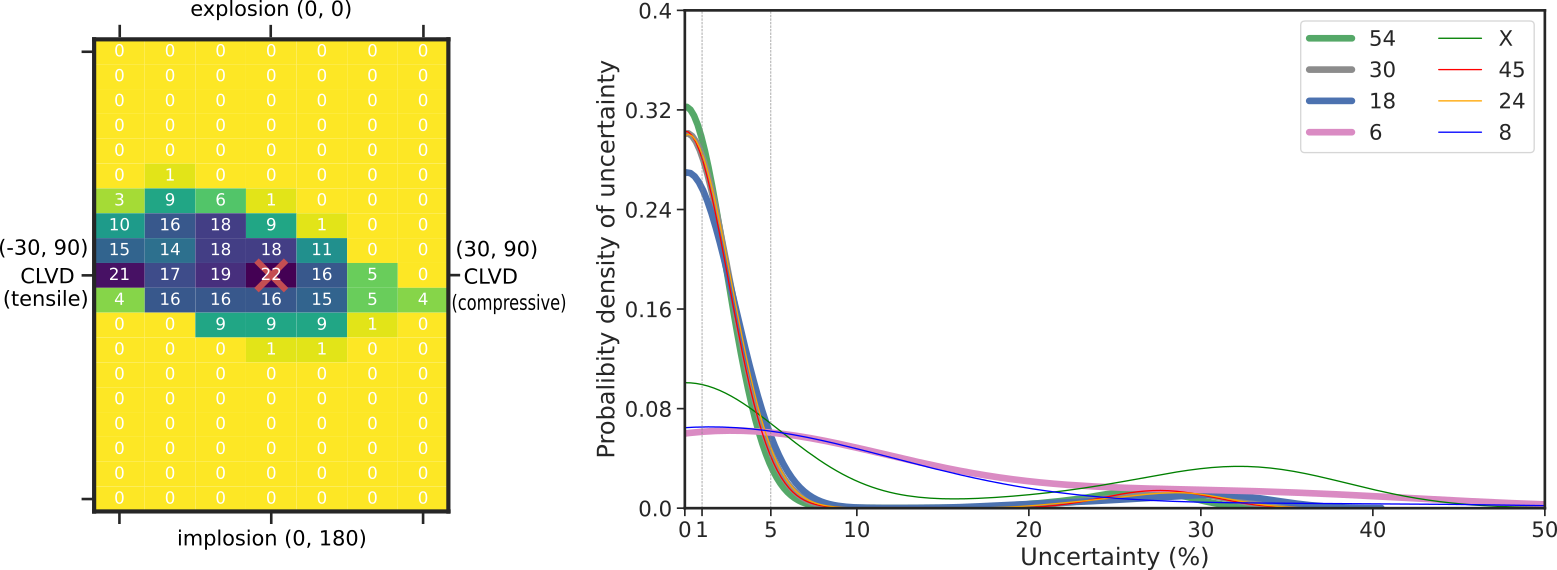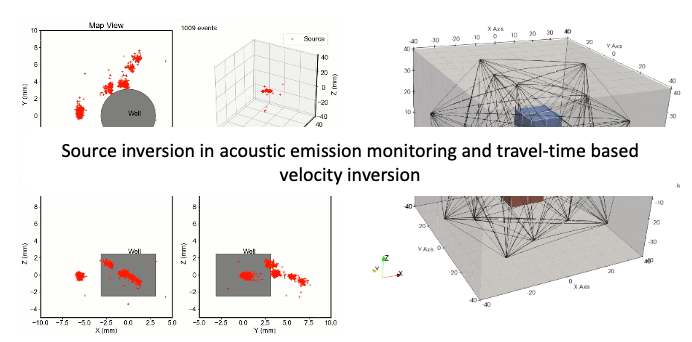Acoustic Emission and Sensor Array Optimization
Introduction
Welcome to the Acoustic Emission research page. Here, we provide insights into sensor array optimization for laboratory acoustic emission experiments. Our methodologies aim to enhance sensor placement for improved monitoring accuracy. If you utilize SeisCloud (https://seis.cloud) or our code, we appreciate your citation:
Ding, L., Yang, G., Kravchinsky, E. et al. Quantitative Optimization of Sensor Positions in Laboratory Acoustic Emission Experiments. Rock Mech Rock Eng (2025). https://doi.org/10.1007/s00603-025-04605-6
Visualizing Sensor Arrays
The visualization below illustrates an optimized sensor array with 18 sensors placed on a sample block. Smaller cubes indicate original sensor positions, while larger cubes mark the optimized array positions.
Requesting Sensor Arrays from SeisCloud
Through URL Requests
SeisCloud provides sensor positions for both block and cylindrical samples. Use the following URLs to download CSV files:
- Cylindrical Sample (20 sensors, radius = 50 mm, height = 100 mm)
1 | https://db.seis.cloud/aecylinders?nsensor=20&radius=50&height=100 |
- Block Sample (20 sensors, two vertices at [-32.5, -32.5, -65] and [32.5, 32.5, 65])
1 | https://db.seis.cloud/aeblocks?nsensor=20&p1x=-32.5&p1y=-32.5&p1z=-65&p2x=32.5&p2y=32.5&p2z=65 |
Using Python Script
For programmatic access, use our Python library:
1 | from DArrays.AEDesigner import Designer |
1 | # Initialize an instance to request sensor arrays from SeisCloud |
Request Sensor Locations for a Block Sample
1 | saving_filepath = "sensor_block_n20.csv" |
Request Sensor Locations for a Cylindrical Sample
1 | saving_filepath = "sensor_cylinder_n20.csv" |
Non-Uniqueness in Moment Tensor Inversion for AE Monitoring
The moment tensor inversion (MTI) method, based on first polarity, suffers from inherent non-uniqueness due to sparse sensor arrays. Our research quantifies this uncertainty and evaluates sensor array reliability.
Ding, L., Yang, G., Kravchinsky, E., Popoola, A. K., Goodfellow, S., Liu, Q., & Grasselli, G. (2023). Systematic Uncertainty Quantification of First-Polarity-Based Moment Tensor Inversion Due to Sparse Coverage of Sensor Arrays in Laboratory Acoustic Emission Monitoring. Pure and Applied Geophysics. DOI

- Left: Source type classification from MTI solutions.
- Right: Uncertainty distribution for various sensor arrays.
Data Processing in Acoustic Emission Monitoring
We employ advanced data processing techniques to investigate rock failure mechanisms. Our workflow includes:
- Event Detection
- Source Localization
- Focal Mechanism Inversion
- Velocity Survey & Traveltime Tomography

Future Enhancements
We are continuously improving SeisCloud. Expect new features soon, including:
- 3D Waveform Simulation
- Advanced Source Localization Methods
- Refined Moment Tensor Inversion Techniques
- Enhanced Velocity Survey & Traveltime Tomography
Stay tuned for upcoming developments!
Notes
- SeisCloud (https://seis.cloud) is updated monthly. Report any issues via email.
- Sensor arrays available for 8 to 40 sensors. Need more? Contact us!
- Having trouble accessing SeisCloud? Reach out, and we’ll assist you.
Thank you for your interest in SeisCloud and acoustic emission research!